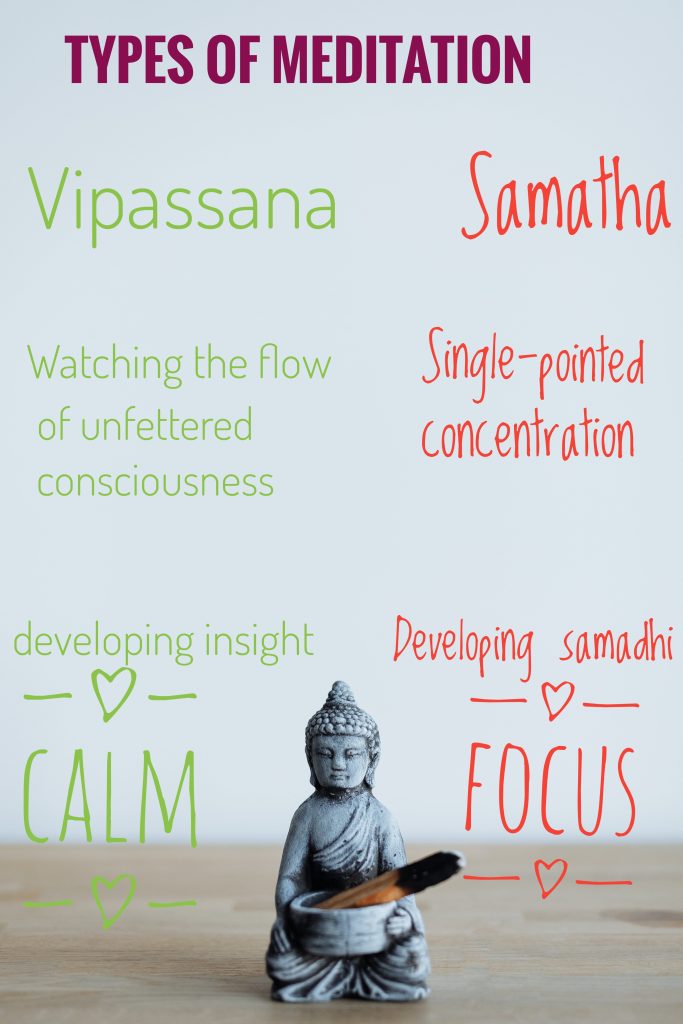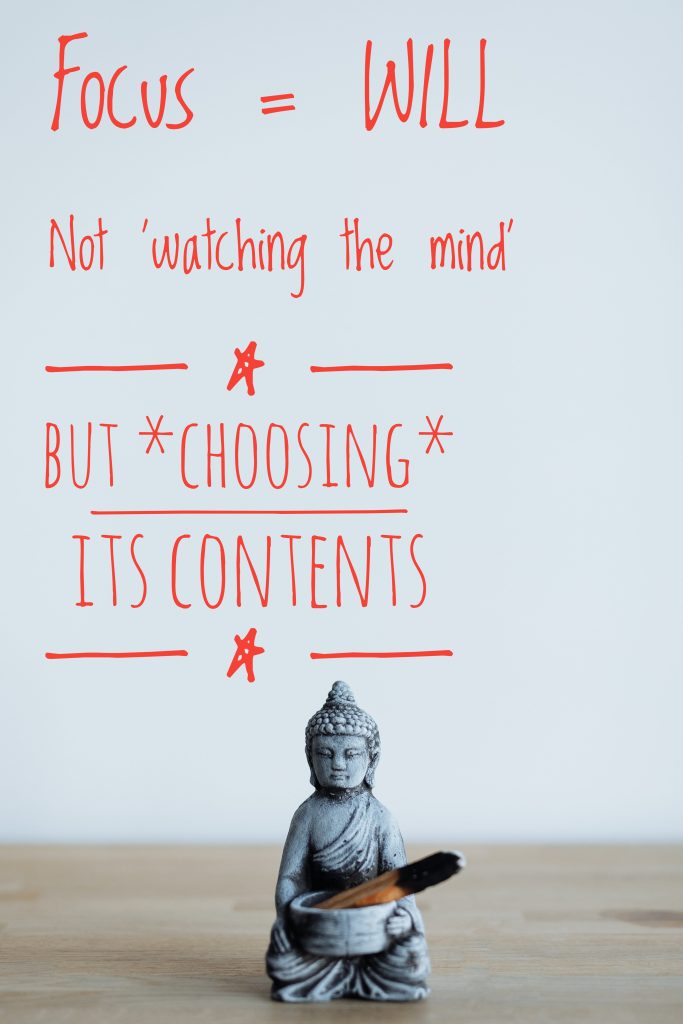Meditation for Manifestation
There is one single skill that is the absolute crux of manifestation. This skill is central to all forms of manifestation, changing reality according to your will, magick, law of attraction, rituals or whatever. Not only this but it's the central skill in any form of self-improvement, such as psychotherapy, cognitive therapy, positive thinking - and also any system of change, such as stoicism.

How do all these things work, essentially? They are based on replacement thoughts in some way. Think about it. To manifest something, you stop thinking that reality is one way (poverty for example) and you decide that now and in the future you will think abundant thoughts. If you do a ritual of magick to create abundance, you have to focus repeatedly on creating the ritual (with an abundant intent or why would you be doing it) and then when it is done you choose to NOT think contrary thoughts to your desired chosen future but only thoughts congruent with your will (for the future). If you go to a psychotherapist wanting to change some aspect of yourself, then the therapy will work by identifying which thoughts you no longer want to keep thinking (about yourself) and a new set of thoughts you will choose to think instead.
Of course, you cannot just choose a thought once. To be transformational, it's necessary to be aware of the contents of your mind constantly, and this involves the central skill, concentration. I'm hesitant to say the word as it might have the connotation of being 'hard'. But really, for me, it is synonymous with 'mindfulness'. The skill of always knowing what is going on in your consciousness. Because you have the skill of freedom, the ultimate skill of a human being — you can choose your thoughts (effortlessly) and feelings (with practice) and thus it is the ultimate freedom - and really the only freedom that you have.
Concentration is a type of meditation. Generally, it is considered there are two kinds of meditation, vipassana and samatha. Vipassana is just watching the changing contents of the mind without interfering, and this will eventually lead to insight into the nature of self (that it is empty) and so awakening. Samantha is to concentrate on one thing, which also leads ultimately to the emptiness of self. But actually, both (in a way) are the same thing.

They both require concentration. With Vipassana, you can sit and meditate and intend to watch the contents of your mind, but then quickly forget that is what you wanted to do and the mind goes off on a mindless tangent. It takes concentration to keep on watching the contents of the mind in a meditation and it takes the same concentration to carry on that observation into all waking life ( this is mindfulness). How is samatha different? Samatha is concentration and will. You will choose, for example, to focus on a visualization of a blue circle for five minutes. You are choosing to create something in your mind and then concentrate on that; or with vipassana you are choosing to concentrate on whatever comes up in the mind.
The best meditation practice for manifestation
The art of manifestation is, in essense, a samatha style mindfulness, i.e. living constantly under concentration on will, or to put it simply, choosing all of our thoughts and all of our feelings (and not choosing other thoughts and feelings). There is no more to it than this; we are exercising our only human freedom. So if the central skill to life, the universe and everything is concentration and will, how do we develop them?
Answer: You do it.
You concentrate on something. When you're concentrating on something and then forget, you remind yourself and do it again. And again. And again. And like with any practice, you get better the more you do it.
How to get started with developing concentration to aid manifestation
Advice for meditation often doesn't work in a Western, practical context. It's based on doing very long periods of meditation in ideal conditions in a perfect posture. People recommend this because it is what has worked for them – but that doesn't mean that it's the only way to do it. My method is to start with a very short period, just one minute, and aim for perfection, rather than sit for twenty minutes and perhaps achieve brief concentration for two or three times for half a minute each session.
The purpose and end result of this practice is going to be thought-replacement. When you are out 'in the field', living life, and an unwanted thought or daydream or whatever, keeps coming up and you are going to make the choice (in your freedom) to replace it – then you create the new thought, which is easy. The thing is, because of a lifetime of conditioning, unwanted thoughts soon return once unwatched, even seconds after you reset them.
This is the miraculous trick of this method. If you choose a replacement thought and can hold it intensely with concentration, where attention goes, energy flows, and energy flows away from what you are not concentrating on. The new thought will replace the old one. Eventually, the old one will surface again, once unwatched, because of habit, but it's a habit of thinking, and it can be re-routed, over time. As you practice this thought replacement, the time interval between the old thought rearising becomes longer each instance, because with less attention, it begins to lose its power.
The development of will
My method is somewhat based on the writings of Alister Crowley, renowned occultist. His practice was pretty extreme. The meditation part was to concentrate (I believe) starting at ten minutes periods and count each break in concentration. Then a separate mindfulness exercise was to choose a certain letter, such as Q, or word, like 'they' or something, and vow not to use it for a certain period. That sounds crazy. But just think if you are never going to say a sentence containing 'they' you need to be mindful of everything you say. His method was that each time one of his followers transgressed they would keep a record in a notebook and then each night count them up, eg. three transgressions, someone lost concentration and said 'they' three times, they would have to get a knife and slash their forearm open three times! Not proud to say it, but this is what I did when I first read the instructions, more than thirty years ago now.
I propose a more sensible practice for you. Simply start meditating for a few minutes each morning, say three minutes. I actually have a one minute egg timer, which is a little eccentric, but set a timer on your phone for one minute. Choose a mental image to concentrate on. I would suggest it can be a symbol of your central manifestation practice. Perhaps you have a picture of a deity or a spiritual light, a beautiful picture with a religious quote on it. Make a mental image (visualize the chosen picture). Where is the image (in relation to your body and consciousness)? It's 'in' the mind. Where is the mind? Kind of locate in your field of consciousness where the visualized image seems to be.
For me, it feels like my consciousness is centred around my eyes and things I visualise, in reference to my consciousness, seems to naturally exist a little behind my sense of consciousness. I consciously bring what I am visualizing forward in space, so it is located within my body near my forehead. I choose a simple circle, which for me represents completion (of my manifestations, practice and life). So I create this visualization of my symbol and in a way it is kind of existing in my body because I choose to imagine it there, but in another way, when I close my eyes, it is kind of existing in another realm. It's both in this world and it isn't.
Obviously, it's not objective because other people cannot see it, and I can sort of choose to make it exist in a place in reference to my physical body where my consciousness is located, but it kind of exists in a totally different world also depending on how much my awareness is in this physical world or in the imaginary world. If my eyes are open, I tend to feel more here (in the physical world) and less there, and vice versa. Experiment and see how reality is for you.
Consider that this symbol represents all your manifestations and wildest dreams coming true. Feel excitement. Feel it high in your body. If the energy of emotion in your body is too low and you have read my other teachings on energy, you will know how to raise it. THE JOY ANCHORS THE CONCENTRATION. As long as you can hold this emotion you will be concentrated. Start the timer and aim for one minute of perfect concentration. I have a mindfulness app that I can program to ring every minute for a set number of minutes, so I don't need to do everything and the bell returns my concentration if it wanders.
I don't teach that you have to be motionless in a meditative posture, though this is the traditional teaching. You will very rapidly find that it is MUCH easier to control your attention when you either have your eyes closed or fixed in one space (though the latter can cause intense drowsiness). It's also easier to concentrate when the body is held still. I did experiment doing this completely relaxed, just sitting and doing whatever I wanted with my body and eyes, slouching and looking around, and the practice soon degenerated into just... slouching and looking around but not actually meditating or concentrating at all!
Each time concentration wanders, simply bring it back to the chosen object. If this is hard, reduce three minutes to one until you have it completely nailed. When you are struggling, be aware that there are two kinds of concentration, near and far. A far break in concentration is when your mind wanders off and you have no idea what the hell the mind was up to when it finally returns to the meditation object. Near concentration is when attention still wanders, but not far and not for long, perhaps into a little daydream, but when it returns you can recall everything that it was doing, all the thoughts and daydreams that occured. Near concentration means concentration wanders but it never goes far. Now this is an early goal, because each time you nail a minute of perfect concentration consistently, you add a minute to your practice, until you can keep near perfect concentration for ten minutes, which is no mean feat, nor a meaningless one - because this technique has a purpose in a manifestation practice which is two-fold.
One, you will aim to obtain near concentration forever. Meaning, throughout the day for the rest of your life, the mind never wanders far. This is possible. You are choosing every single thought and feeling with concentration, and sometimes the mind becomes mindless, but concentration is never far away. When it comes back you can not only recall every stupid thing it was doing, dreaming, thinking and saying, but you can re-visualize to correct it, you can change your memories, beliefs, recollections and thoughts in retrospect.
Concentration, mental diet and healing
There is a second power of concentration, when you identify unhealed or obsessive or any unwanted mental process, dream, picture, thought, you can choose a replacement thought and hold it long enough, and withdraw attention from the unwanted for long-enough that it loses its power to return... for that instance. But you will have the near concentration to be able to reset it the next time your habit causes it to reappear, and correct it, again and again and again until the dream becomes a reality: that it is possible to choose every single thought and feeling forever and when you do this you will be forever free.
There is a great series of pictures called the Zen bull herding pictures that shows the journey or awakening, the bull is your mind. I direct you to it, and good luck!
